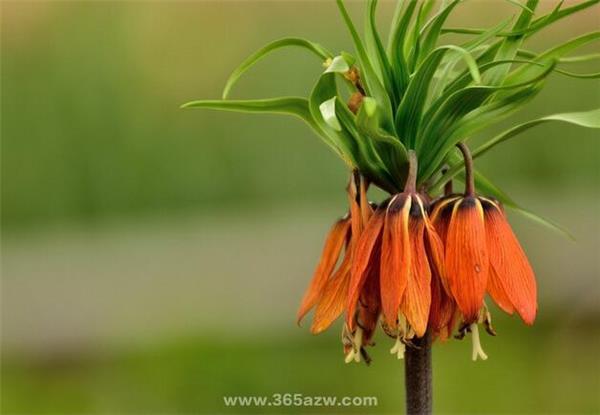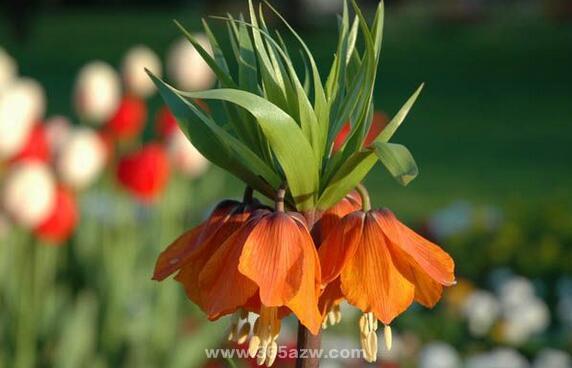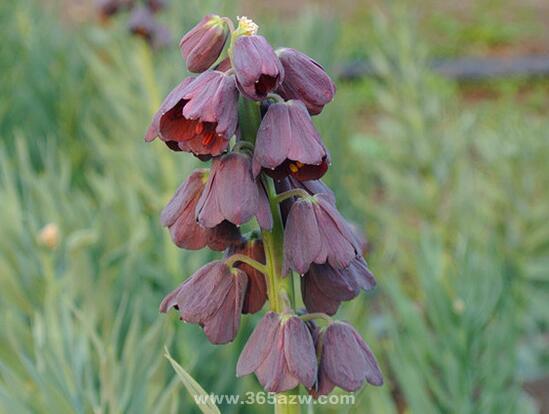The cultivation of Fritillaria thunbergii
The color of Fritillaria is gorgeous, also known as Crown Fritillaria, Corolla Fritillaria, Imperial Fritillaria, Queen Fritillaria, which is a plant of the genus Fritillaria of Liliaceae. Next, we will introduce the method of breeding Fritillaria.

The language of Fritillaria: patience.
Fritillaria thunbergii, also known as Fritillaria imperialis, also known as Crown Fritillaria, Corolla Fritillaria, Emperor Fritillaria, King Fritillaria, is a plant of the genus Fritillaria of the Liliaceae, originating from temperate Eurasia, Himalayas to Iran, and is now distributed all over the world.
Fritillaria thunbergii is a perennial bulb flower. The plant height is about 70 cm, and the leaves are ovate-lanceolate to lanceolate. The plant bears flowers, the Corolla is bell-shaped, and several flowers droop around the stem and grow under leafy bracts, which is very unique. Its cultivation has a long history, about 400 years, there are many varieties, there are a variety of colors, such as yellow, red and double types.
The charm of Fritillaria lies in the Corolla at the top and the coronal leaves (bracts, to be exact) on the flowers. It is called the sixth century Bishop of Seville-the representative flower of Isidell. The bishop is very enthusiastic about education, and the most important qualification of educators is patience. Probably coupled with the fact that its flowers always keep their heads down, so the flower language of Fritillaria corona is patience.
The flowers of Fritillaria thunbergii are bright red, orange and yellow, with a florescence from April to May. Another wave period Fritillaria (F.persica) plant height of 80 cm, long spikes, flowering in early summer, can be used as a flower border. Fritillaria thunbergii, also known as F.michailovskyi, has a height of 20 cm, thin, gray-green leaves, small spikes, bell-shaped, drooping, florescence in early summer.
Cultivation techniques of Fritillaria thunbergii

For planting Fritillaria, we should choose sandy loam with loose and fertile, rich in organic matter, good drainage and pH6.0-7.5. before planting, we should apply sufficient base fertilizer, mature organic fertilizer or fish and bone meal, and pot culture should use humus soil, garden soil and sand mixed substrate. The suitable planting period is from September to October in autumn, the distance between plants is about 30cm, and the soil is covered with 8cm-12cm after planting.
Areas with cold climate need to be covered for overwintering. After the new buds are unearthed in early spring, topdressing should be applied once in time to promote the growth of stems and leaves. Keep the soil moist at ordinary times, and the flowering varieties in late spring have better shade quality. During the growth period, it is vulnerable to leaf spot disease and lily black weevil, which can be controlled by spraying 50% topazine wettable powder 700800 times and 140% omethoate EC 1000 times respectively. After the aboveground withered in summer, the soil can be left in the dormant period, but the soil should not be too wet to avoid underground bulb rot, and it can also be dug up and stored in a cool and ventilated environment for summer. Bulb rot occurs occasionally, in addition to disinfecting the bulb, Bordeaux solution can be sprayed regularly to prevent and cure it.
The mode of reproduction of Fritillaria thunbergii

Fritillaria thunbergii is propagated by dividing balls, which is often divided in summer and autumn, and the reproduction is mainly divided bulbs.
Disease control of Fritillaria thunbergii
Fritillaria thunbergii is common. There are many brown spores on the back of leaves, petioles and the base of stems. When the disease is serious, Fritillaria perished in the early stage. The prevention and control method is to strengthen the field management, remove the residual plants on the ground in time, spray 1000 times liquid methyl topiramate + new high lipid membrane before the disease.
Grey mold disease
Water-immersed disease spot appeared on the leaf tip of chlorophyll, and withered and died in the later stage, and the control was sprayed with 500-fold solution of benzoammonium + new high lipid membrane.

This is the end of the introduction of Fritillaria culture. I hope it will be helpful to you.
Related
- Wuhan Hospital Iron Tree Blooming Result Was Instantly Frightened by the Gardener Master
- Which variety of camellia is the most fragrant and best? Which one do you like best?
- What is the small blue coat, the breeding methods and matters needing attention of the succulent plant
- Dormancy time and maintenance management of succulent plants during dormancy
- Minas succulent how to raise, Minas succulent plant pictures
- What are the varieties of winter succulent plants
- How to raise succulent plants in twelve rolls? let's take a look at some experience of breeding twelve rolls.
- Attention should be paid to water control for succulent plants during dormant period (winter and summer)
- Watering experience of twelve rolls of succulent plants
- Techniques for fertilizing succulent plants. An article will let you know how to fertilize succulent plants.



